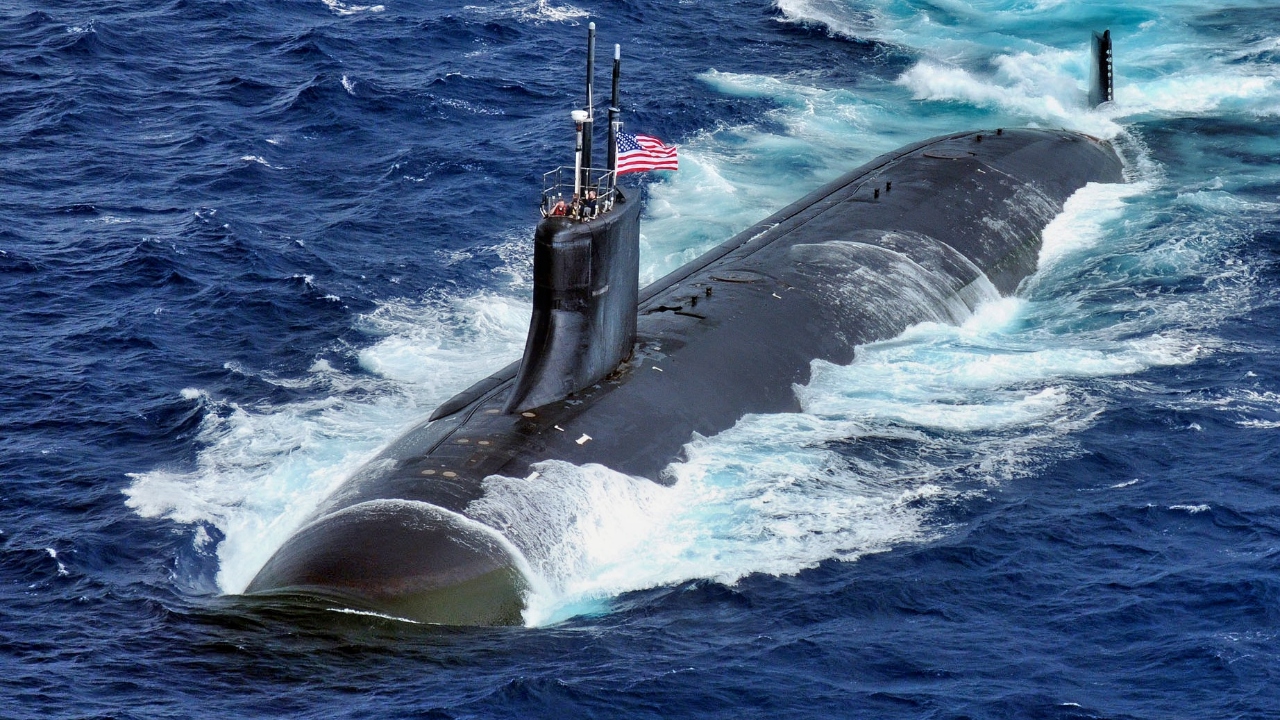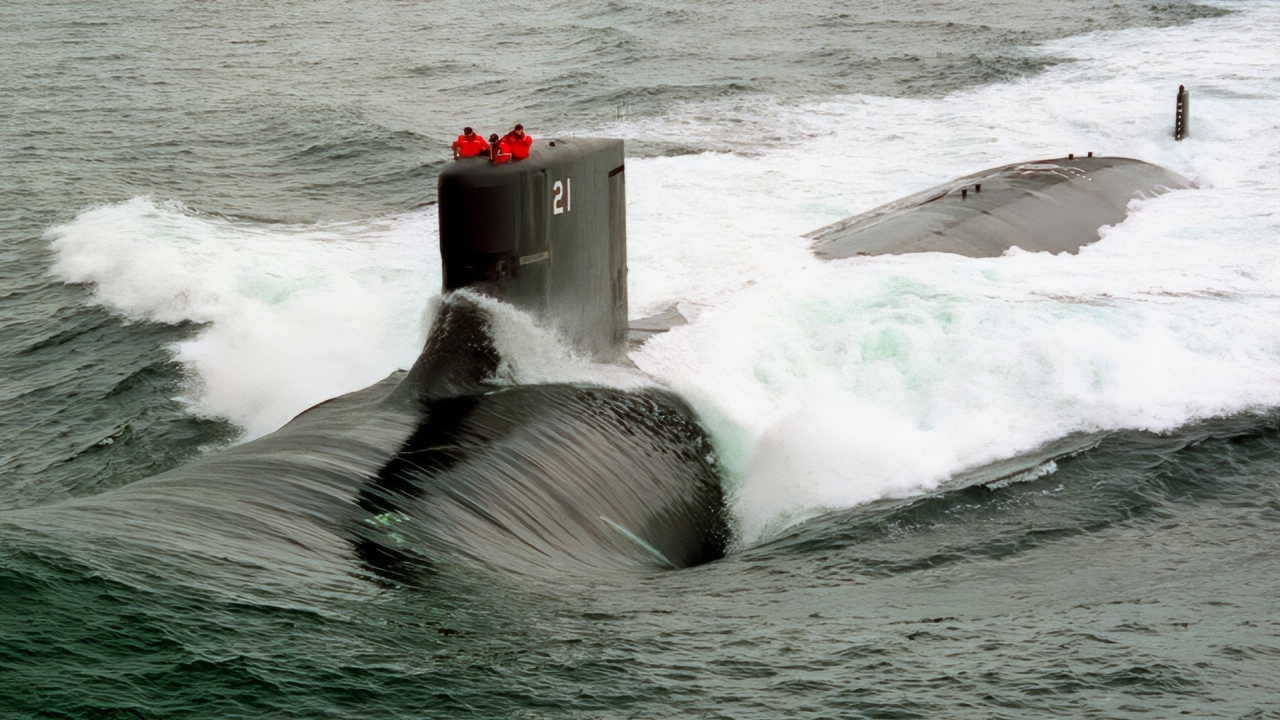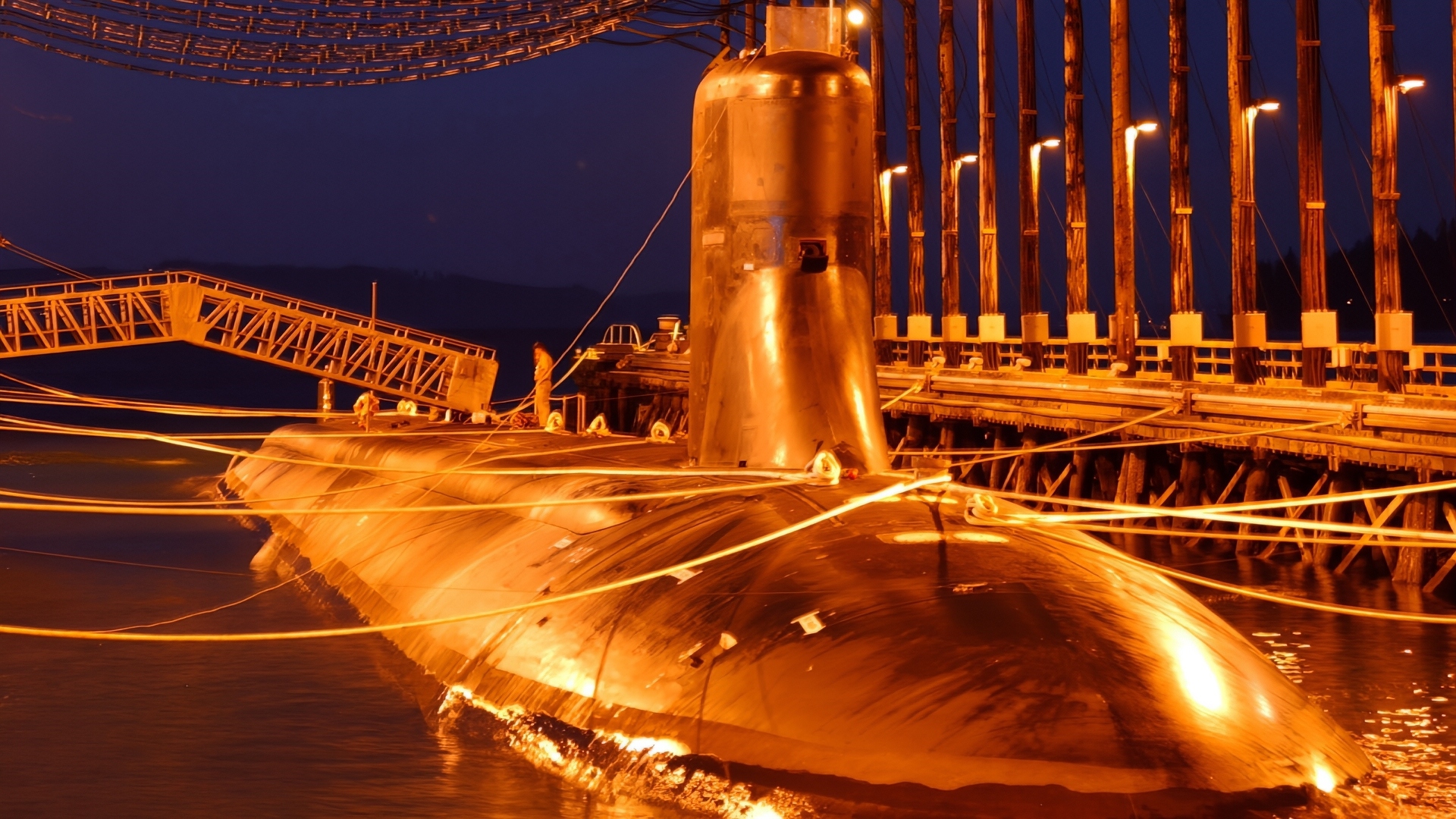Key Points and Summary – The USS Jimmy Carter (SSN-23) is the US Navy’s most unusual—and most expensive—attack submarine.
-A heavily modified Seawolf-class boat, it carries a 100-foot Multi-Mission Platform “plug” that turns it into an undersea mothership for SEALs, drones, and covert gear, likely including undersea cable taps.

(Nov. 17, 2009) USS Connecticut (SSN 22) steams through the Pacific Ocean after participating in a 26 ship formation photo exercise. George Washington, the Navyís only permanently forward-deployed aircraft carrier participated in a photo exercise which was the culmination of ANNUALEX 21G, the largest annual bilateral exercise with the U.S. Navy and the Japan Maritime Self Defense Force. (U.S. Navy photo by Mass Communication Specialist Adam K. Thomas/RELEASED)

The U.S. Navy attack submarine, USS Seawolf (SSN 21), conducts Bravo sea trials off the coast of Connecticut in preparation for its scheduled commissioning in July 1997. Image Credit: Creative Commons.
-Extra thrusters let the sub hover delicately over the seabed, while retaining Seawolf-class speed, depth, and stealth.
-Awarded a Presidential Unit Citation for a mysterious “Mission 7,” Jimmy Carter embodies what the Navy lost when the Seawolf program was slashed—and why a future seabed-warfare successor is already on the drawing board.
The Remarkable USS Jimmy Carter (SSN-23)
Commissioned in 2005, the USS Jimmy Carter (SSN-23) is a unique Seawolf-class nuclear-powered fast-attack submarine, known as a spy submarine due to its special modifications.
This Seawolf-class boat is no ordinary submarine. It races beneath the surface with unmatched speed, stealth, and weaponry, even compared to more modern boats. It is also the most expensive SSN submarine the US Navy has ever built, costing over $3.5 billion. And it is worth every cent.
It is equipped with an additional 100-foot hull extension called the Multi-Mission Platform (MMP), which allows it to launch special equipment such as remotely operated vehicles (ROVs), conduct undersea warfare, deploy Navy SEALs, and potentially tap into undersea cables. The submarine is designed for quiet and deep operations, making it ideal for intelligence gathering and clandestine missions.
The Final Seawolf-Class Submarine Is Unique:
The USS Jimmy Carter (SSN-23) was the third and final Seawolf-class submarine, modified by Electric Boat to accommodate advanced technologies for naval special warfare, tactical surveillance, and mine warfare operations. It is 100 feet longer than a typical Seawolf submarine and is packed with new technology, and acts like a “mothership” for Navy SEAL teams.
Named for former-President Carter, who himself was a nuclear submariner. Carter is the only president who ever served on submarines. He was a Naval officer from 1946 to 1953. The submarine is based out of Naval Base Kitsap-Bangor, Washington.
War Department studies have described the Navy’s need to develop submarines with “improved payload capabilities and a flexible interface with the undersea environment, without sacrificing Seawolf-class warfighting capability.” According to the Navy, the Jimmy Carter modification perfectly fits those goals.
The $887 million modification required alterations to the basic Seawolf design in the areas of ballast control, mission-management spaces, and various services.
A unique feature of the modification was the creation of a flexible ocean interface, referred to as the “wasp waist,” which enables the Navy to deploy and recover various payloads without having to use torpedo tubes.

USS Connecticut Seawolf-Class Submarine. Image Credit: Creative Commons.

Seawolf-Class. Image Credit: Creative Commons.
The USS Jimmy Carter was delivered to the U.S. Navy in December 2004 and commissioned in 2005.
The USS Jimmy Carter’s Modifications:
The Carter is a Multi-Mission Platform (MMP) submarine. During construction, an additional Ocean Interface (OI) section, sometimes referred to as “the plug,” was inserted into its hull, providing extra space for various missions and equipment.
The “ocean interface” on the USS Jimmy Carter (SSN-23) is a unique modification that enables the submarine to launch and recover remotely operated vehicles (ROVs), divers, and other payloads without using its torpedo tubes.
The MMP creates a large, floodable hangar area between a smaller internal pressure hull (the “wasp waist”) and the outer hull. This “aquarium” section is filled with seawater and kept at ambient pressure, allowing personnel inside the pressurized hull to operate equipment in the hangar.
This section can launch Remotely Operated Vehicles (ROVs), Unmanned Underwater Vehicles (UUVs), Countermeasures, Sensors, and classified research systems.
The USS Jimmy Carter also received auxiliary precision thrusters forward and aft, which allow the boat to hold station or hold a position relative to a point on the seafloor or a structure, even in tricky currents. Despite its enormous size, the Carter can maneuver like a ballerina.
While there are only two “regular” Seawolf submarines and the Carter, they are still outstanding assets to the fleet. The USS Seawolf is scheduled for its extended maintenance in 2026.
Presidential Unit Citation:
The crew of the USS Jimmy Carter received the Presidential Unit Citation in 2013 for what has become known as “Mission-7”, with the Navy only saying that it “successfully completed extremely demanding and arduous independent submarine operations of vital importance to the national security of the United States.”
The Carter’s “Mission 7” was a highly classified, eight-week-long deployment in early January 2013 that earned the submarine’s crew a Presidential Unit Citation.

The U.S. Navy’s newest attack submarine, USS Seawolf (SSN 21), conducts Bravo sea trials off the coast of Connecticut in preparation for its scheduled commissioning in July 1997. The aerial image shows the sail from a starboard angle, looking forward, 9/16/1996. Jim Brennan. This image is public domain/U.S. Government photo.
The mission is shrouded in secrecy, but it is widely believed to have involved advanced espionage, such as tapping undersea cables for intelligence gathering in the Pacific. The submarine returned to port in Hawaii for repairs, showing signs of damage, and flying the Jolly Roger flag, a traditional symbol for a successful covert mission.
The Navy Wanted The Seawolf-Class Submarines:
The Navy wanted the Seawolf-class submarines to counter increasingly advanced Soviet submarines, such as the Typhoon and Akula classes, during the late Cold War.
The Seawolf design was a next-generation response to this threat, providing unparalleled stealth, speed, and deep-ocean capabilities with advanced sonar and a stronger hull to withstand greater depths.
The ships were also designed to carry a significant arsenal of weapons, including more Tomahawk cruise missiles, and were equipped for both blue-water and shallow-water operations. The Seawolf could race at 35 knots beneath the surface or go 20 knots in silent mode.
The Seawolf class is actually more advanced than the Virginia-class boats that the Navy is building today.
The Seawolf submarine was in a class all by itself. The hull was designed to withstand deeper dives; it weighed 9,000 tons, could carry 50 torpedoes and cruise missiles, and had an unsurpassed level of stealth.
The boat was about 300 yards long, packed with weapons and technology, and quieter than a church mouse. When the Soviet Union collapsed in on itself. The 29 Seawolf submarines the Navy wanted were reduced to 12, and then to three.
In another short-sighted move, the Pentagon sliced the program to the bone. The Clinton administration’s “peace dividend” was a mistake that the War Department is still paying for today.
Oh, how the Navy would love to have another 26 Seawolf submarines today. And another USS Jimmy Carter (or two).
It has been reported in many circles that a new Modified Virginia-class Submarine and Seabed Warfare (Mod VA SSW) submarine is planned as a successor to the USS Jimmy Carter. That will be something to behold.
However, until then, the SSN-23 will exemplify its motto of Semper Optima and remain “Always the Best.”
About the Author: Steve Balestrieri
Steve Balestrieri is a National Security Columnist. He served as a US Army Special Forces NCO and Warrant Officer. In addition to writing on defense, he covers the NFL for PatsFans.com and is a member of the Pro Football Writers of America (PFWA). His work was regularly featured in many military publications
More Military
The Mach 15 X-43D ‘Hypersonic Scramjet’ Has a Message for the U.S. Air Force
Europe’s Future Combat Air System (FCAS) Stealth Fighter Is ‘Circling the Drain’
The Mach 2 B-58 Hustler Bomber Has a Message for the U.S. Air Force










